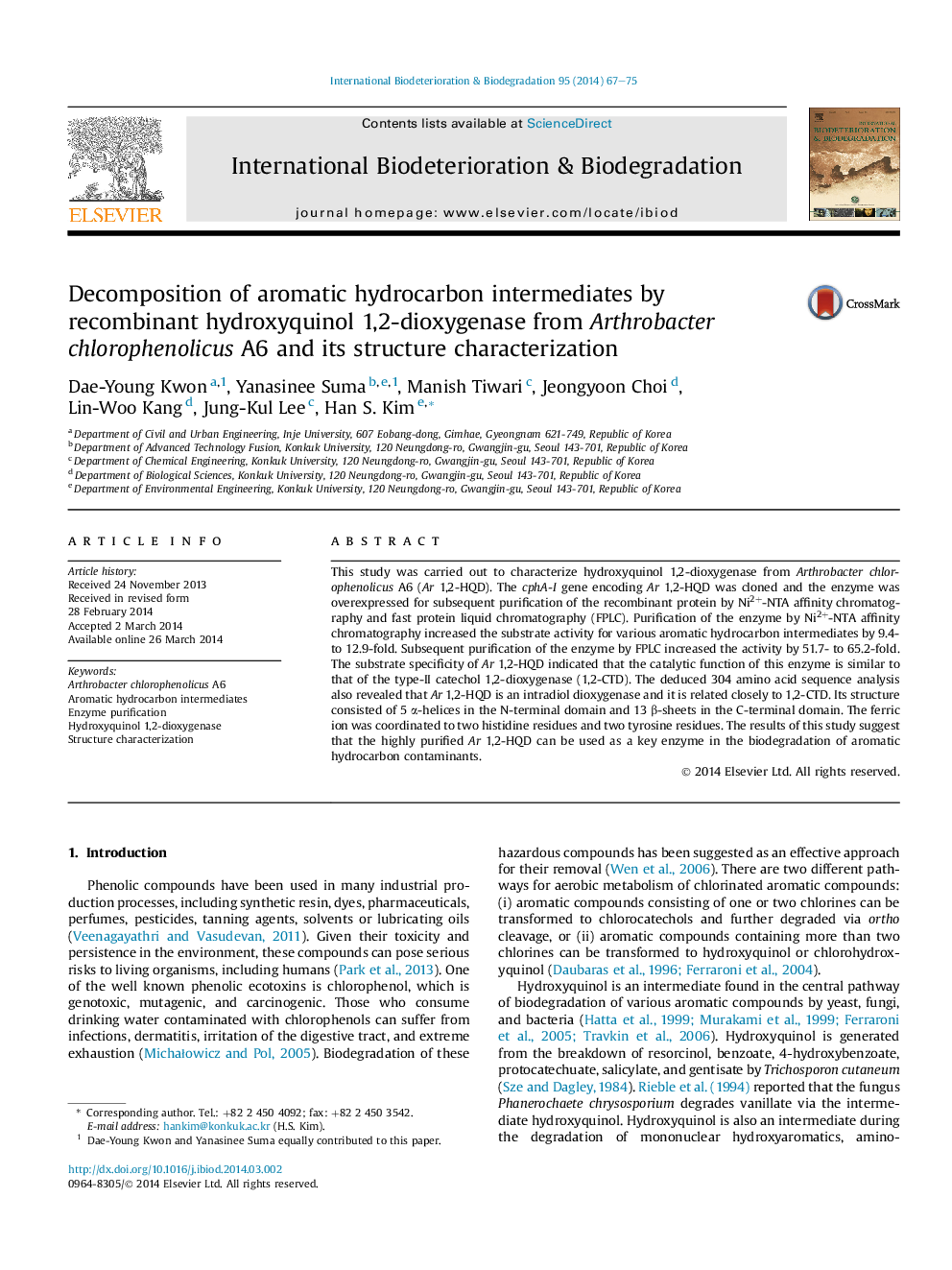| کد مقاله | کد نشریه | سال انتشار | مقاله انگلیسی | نسخه تمام متن |
|---|---|---|---|---|
| 4364603 | 1301716 | 2014 | 9 صفحه PDF | دانلود رایگان |

• Hydroxyquinol 1,2-dioxygenase (Ar 1,2-HQD) was cloned, overexpressed, and purified from Arthrobacter chlorophenolicus A6.
• The purity and specific activity of Ar 1,2-HQD increased remarkably after a two-step purification process.
• Ar 1,2-HQD is closely related to the type-II 1,2-catechol dioxygenase.
• A ferric ion was coordinated to two histidine residues and two tyrosine residues at the putative active site.
This study was carried out to characterize hydroxyquinol 1,2-dioxygenase from Arthrobacter chlorophenolicus A6 (Ar 1,2-HQD). The cphA-I gene encoding Ar 1,2-HQD was cloned and the enzyme was overexpressed for subsequent purification of the recombinant protein by Ni2+-NTA affinity chromatography and fast protein liquid chromatography (FPLC). Purification of the enzyme by Ni2+-NTA affinity chromatography increased the substrate activity for various aromatic hydrocarbon intermediates by 9.4- to 12.9-fold. Subsequent purification of the enzyme by FPLC increased the activity by 51.7- to 65.2-fold. The substrate specificity of Ar 1,2-HQD indicated that the catalytic function of this enzyme is similar to that of the type-II catechol 1,2-dioxygenase (1,2-CTD). The deduced 304 amino acid sequence analysis also revealed that Ar 1,2-HQD is an intradiol dioxygenase and it is related closely to 1,2-CTD. Its structure consisted of 5 α-helices in the N-terminal domain and 13 β-sheets in the C-terminal domain. The ferric ion was coordinated to two histidine residues and two tyrosine residues. The results of this study suggest that the highly purified Ar 1,2-HQD can be used as a key enzyme in the biodegradation of aromatic hydrocarbon contaminants.
Figure optionsDownload as PowerPoint slide
Journal: International Biodeterioration & Biodegradation - Volume 95, Part A, November 2014, Pages 67–75